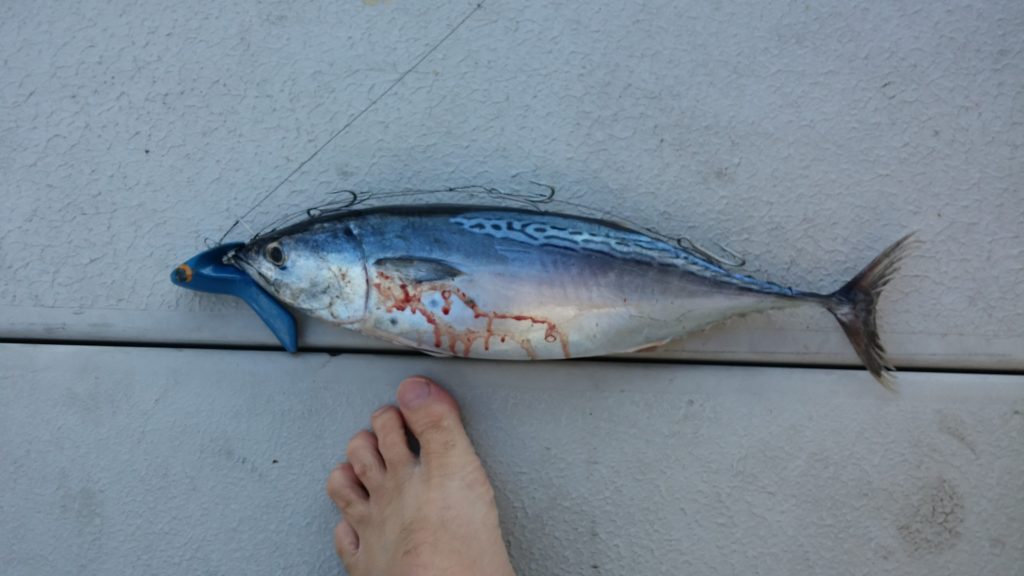
And the Spanish Mackerel might even make it to Spain
And the Spanish Mackerel might even make it to Spain: the Latin name of our fish today is the Scomberomerous Commerson. Here are the other names:
- Tanguigui: way up the East Coast of Africa, this is the most lovely name ever given to a fish
- King Mackerel: not to be confused with the United States model known in Latin as Scomberomerous Scevalla, most of the world use this name for mutual identification and understanding
- Couta: an incorrect abbreviation of the incorrect word Barracuda. But a favoured name anyways. Especially in Natal. And for this author and this article
- Serra: in Mozambique, named after the Serra Mountains – or the serrated shape of the fish’s teeth
- Katonkel: when this fish used to make it all the way to False Bay in the Western Cape of South Africa, it was called a katonkel (not to be confused with bonito – also still called katonkel in some places in the Cape).
- Spanish Mackerel: unbelievably, somehow, this fish is known globally, also as a Spanish Mackerel. And yet, not one ‘Spanish Mackerel’, has ever been to Spain alive.
Until now…the expansion of the species into the Meditteranean in the 1930s, made possible by the construction and opening of the Suez Canal, led them straight into the world’s biggest estuary. Here they found shoals and shoals of cutlass fish between Egypt and Israel. Known here in South Africa as Wala-Wala. This is their favourite food and they gorged themselves.
Only to then find that the entire place was sporting one crucial element to their survival. There are no Zambezi Sharks anywhere. Aka Bull Sharks. Completely absent. Sure there are other predators down there though. They do have some sharks and the odd white must cruise through occasionally. The bluefin tuna, giants in their own right, also must have been quite thrilled when shoals of bite-sized darts (small couta) showed up in their breeding grounds. But on the whole, these fish are predator free.
And growing like crazy!
David Kosta (Rob Allen Med) in Israel started using Mydos way back when. David and Brian Davey (inventor of the baitswimmer) were long-time friends. And then David started surfacing pictures of the outsized couta and amberjack.
Like these!



Greece
The expansion and adaptability of the Scomberomerous Commerson has led these fish as far West as Rhodes in Greece. Where the first one was officially recorded caught in a net by a local subsistence fisher. In 2007.
Tunisia
So now these fish have colonised about half of the Mediterranean coastline. They don’t swim very deep, maybe 80m maximum, so this keeps them inshore. And the gap is closing. Tunisia saw their arrival in 2008!
Soon they are gonna meet at Malta! And they can finally call it a Spanish Mackerel. Or a Spanish King Mackerel at the least.
Getting down Deep
So these couta that swim the calm waters of the Med, have adapted to the deep canyons that prevail in the fishing grounds. And so David has been using Mydo #4s through 5s, to get his big baits down there. He uses lovely bonito and the like…

Chucking your bait onto a big old MYDO like the one above takes care of depth and action. And the new MYDO Bait Swimmer Silver Bullet series add serious FLASH!
You can order your MYDOs at:
